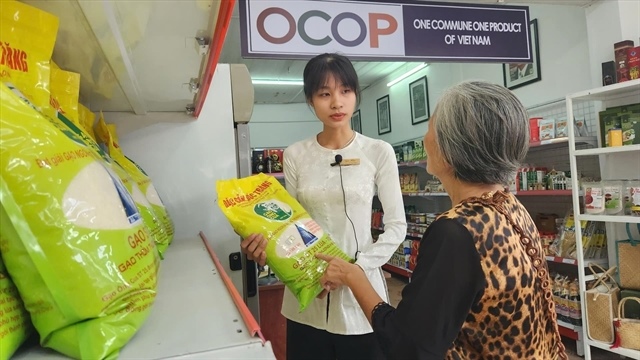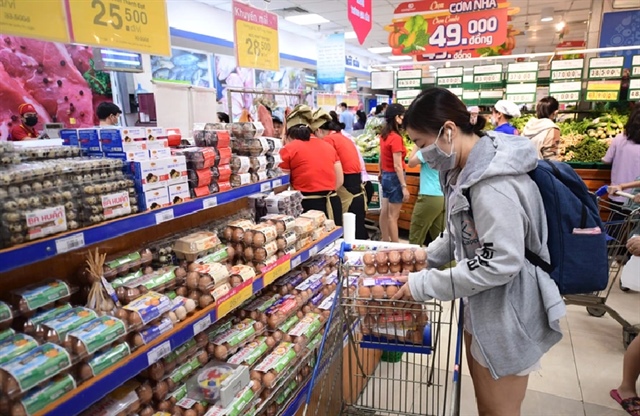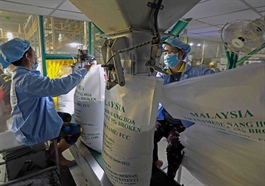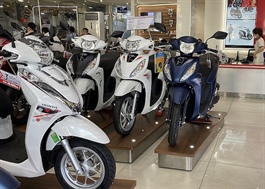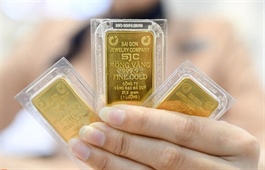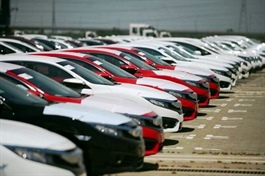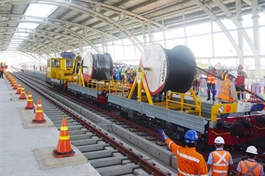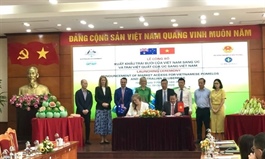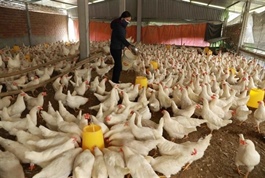EVN submits two-component pricing model
EVN submits two-component pricing model
With the same total energy consumption, those who manage to reduce their maximum demand (Pmax) will pay less, while also helping the electricity system reduce peak load capacity.

EVN engineers inspect electrical equipment at a factory in Hà Nội. VNA/VNS Photo |
Following the direction of the Ministry of Industry and Trade, the Việt Nam Electricity Group (EVN) has completed the project 'Developing a Two-Component Electricity Pricing System (Capacity Price and Energy Price) and Roadmap for Implementation in Việt Nam’s Power Sector'.
It has now been submitted to the Ministry for review and approval to conduct a trial paper-based calculation from October 2025.
Under the plan, the pilot includes industrial customers with an average monthly electricity consumption of at least 200,000 kWh (based on the latest 12-month average), who buy power directly from EVN’s member units.
The paper-based simulation, using actual data, is a preparatory step towards implementing the two-component electricity pricing mechanism stipulated in Article 50 of the revised Electricity Law 2024.
It will gradually replace the existing one-component retail tariff structure, ensuring consistency with the technical infrastructure of the electricity sector, relevant legal frameworks, and consumers’ readiness to adapt to the new pricing model.
The two-component electricity tariff consists of a capacity price and an energy price. Accordingly, the customer’s electricity bill will include two parts: one for the maximum capacity used - reflecting the fixed costs of electricity supply - and one for the actual energy consumed - reflecting the variable costs incurred from generation, transmission, and distribution.
This design encourages customers to optimise their power use. With the same total energy consumption, those who manage to reduce their maximum demand (Pmax) will pay less, while also helping the electricity system reduce peak load capacity. This contributes to more efficient system operation, lower investment costs, and more rational use of social resources.
This move concretises Article 50 of the revised Electricity Law 2024, which mandates a shift towards a transparent pricing structure that accurately reflects the true cost of power supply and promotes efficient, economical electricity use.
Under the trial mechanism, electricity bills for participating customers will be calculated as under a trial two-component pricing model, which is based on Capacity price (Cp x Pmax).
This reflects the fixed costs of the electricity system, corresponding to the customer’s peak capacity use in a given month and Energy price (Ca x Ap): Calculated based on actual energy consumption, reflecting the variable costs of power generation, transmission, and distribution.
This principle encourages customers to adjust their production schedules and avoid excessive peak demand, thereby reducing strain on the national grid, optimising generation and grid investment, and enhancing economic and technical efficiency.
For the group of industrial customers selected for the paper-based pilot, EVN’s power corporations and electricity companies will send the results of the two-component bill calculations along with comparisons against current one-component bills. This allows businesses to assess the impact and provide feedback before official implementation.
Introducing the two-component electricity tariff marks a fundamental reform in the roadmap for operating a competitive retail electricity market. By reflecting both fixed and variable costs accurately, the new mechanism motivates consumers to adjust their electricity usage behaviour, invest in energy-saving technologies, and optimise production efficiency.
It is also an important policy instrument for fulfilling Việt Nam’s commitments to emissions reduction under the Just Energy Transition Partnership (JETP) and achieving net-zero emissions by 2050.
The paper-based pilot in 2025 will not only enable EVN and the Ministry of Industry and Trade to refine formulas, metering infrastructure, and data management systems, but will also serve as a test of readiness among industrial producers - the country’s largest electricity consumers.
- 08:41 14/10/2025


